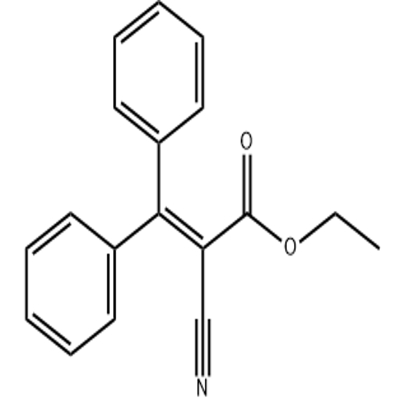-
Categories
-
Pharmaceutical Intermediates
-
Active Pharmaceutical Ingredients
-
Food Additives
- Industrial Coatings
- Agrochemicals
- Dyes and Pigments
- Surfactant
- Flavors and Fragrances
- Chemical Reagents
- Catalyst and Auxiliary
- Natural Products
- Inorganic Chemistry
-
Organic Chemistry
-
Biochemical Engineering
- Analytical Chemistry
- Cosmetic Ingredient
-
Pharmaceutical Intermediates
Promotion
ECHEMI Mall
Wholesale
Weekly Price
Exhibition
News
-
Trade Service
According to Bloomberg, the total power generation in the global power sector exceeded 26,000 TWh in 2018, of which nuclear power accounted for 10%, fossil fuels accounted for 63%, coal was the largest source at 37%, and natural gas was the second largest source of electricity generation at 23%.
Overall, renewables accounted for 26 percent, but its largest contributor was hydropower, which accounted for 16 percent
of the total.
Wind and solar accounted for 4.
8% and 2.
2%
respectively.
According to Bloomberg, providing 7% of global electricity is an extraordinary achievement
for wind and solar power.
From the turn of the century, these two have overcome huge initial cost disadvantages and promoted a radical reform
of technical standards and market structure.
But with 20 years of extraordinary growth and $3 trillion in investment, wind and solar still generate only 7% of the world's electricity and only 3%
of its final energy needs.
Last year, E.
ON's Isar-2 nuclear power plant in Bavaria generated 11.
5TWh of electricity
.
Built in 1988, it is the second most productive nuclear power plant
in the world.
By comparison, all 6,100 wind turbines in Denmark produce only 13.
9 TWh
.
Yes, a well-functioning German nuclear power plant produced 83%
of all wind turbines in Denmark in 2018.
If Isar-2's lifespan can be safely extended to 60 years, it will continue to produce significant amounts of zero-carbon electricity until 2048
.
But no, it will be closed in 2022 as part of
the energy transition.
In 2018, renewable energy provided an impressive 36% of electricity to German consumers
.
However, it also contributes 34% of the UK's power
.
While the UK maintained its nuclear power capacity while increasing renewable resources and reduced its CO2 intensity by more than half to 222 gCO2/kWh, Germany opted to close its nuclear power plants, making its CO2 emissions intensity more than double 490 gCO2/kWh
.
If Germany closes its coal plants, its power system may now be only 300 gCO2/kWh
.
France's electricity system, which is 72% nuclear dependent, has an emissions intensity of less than 100 gCO2/kWh
.
But there are also significant risks
associated with decommissioning nuclear reactors.
The world's 452 existing nuclear power plants represent a huge decommissioning responsibility
.
The UK government estimates it will spend £234bn over the next 120 years to decommission old nuclear power plants and clean up 17 sites
.
Germany provided 38 billion euros for the decommissioning of 17 reactors, or 2.
2 billion euros per reactor.
However, France estimates that its retirement costs have been reduced by an order of magnitude, to just €300 million
per GW.
EDF is providing only 23 billion euros to decommission its 58 existing reactors
.
According to Bloomberg, the total power generation in the global power sector exceeded 26,000 TWh in 2018, of which nuclear power accounted for 10%, fossil fuels accounted for 63%, coal was the largest source at 37%, and natural gas was the second largest source of electricity generation at 23%.
Overall, renewables accounted for 26 percent, but its largest contributor was hydropower, which accounted for 16 percent
of the total.
Wind and solar accounted for 4.
8% and 2.
2%
respectively.
According to Bloomberg, providing 7% of global electricity is an extraordinary achievement
for wind and solar power.
From the turn of the century, these two have overcome huge initial cost disadvantages and promoted a radical reform
of technical standards and market structure.
But with 20 years of extraordinary growth and $3 trillion in investment, wind and solar still generate only 7% of the world's electricity and only 3%
of its final energy needs.
Last year, E.
ON's Isar-2 nuclear power plant in Bavaria generated 11.
5TWh of electricity
.
Built in 1988, it is the second most productive nuclear power plant
in the world.
By comparison, all 6,100 wind turbines in Denmark produce only 13.
9 TWh
.
Yes, a well-functioning German nuclear power plant produced 83%
of all wind turbines in Denmark in 2018.
If Isar-2's lifespan can be safely extended to 60 years, it will continue to produce significant amounts of zero-carbon electricity until 2048
.
But no, it will be closed in 2022 as part of
the energy transition.
In 2018, renewable energy provided an impressive 36% of electricity to German consumers
.
However, it also contributes 34% of the UK's power
.
While the UK maintained its nuclear power capacity while increasing renewable resources and reduced its CO2 intensity by more than half to 222 gCO2/kWh, Germany opted to close its nuclear power plants, making its CO2 emissions intensity more than double 490 gCO2/kWh
.
If Germany closes its coal plants, its power system may now be only 300 gCO2/kWh
.
France's electricity system, which is 72% nuclear dependent, has an emissions intensity of less than 100 gCO2/kWh
.
But there are also significant risks
associated with decommissioning nuclear reactors.
The world's 452 existing nuclear power plants represent a huge decommissioning responsibility
.
The UK government estimates it will spend £234bn over the next 120 years to decommission old nuclear power plants and clean up 17 sites
.
Germany provided 38 billion euros for the decommissioning of 17 reactors, or 2.
2 billion euros per reactor.
However, France estimates that its retirement costs have been reduced by an order of magnitude, to just €300 million
per GW.
EDF is providing only 23 billion euros to decommission its 58 existing reactors
.







